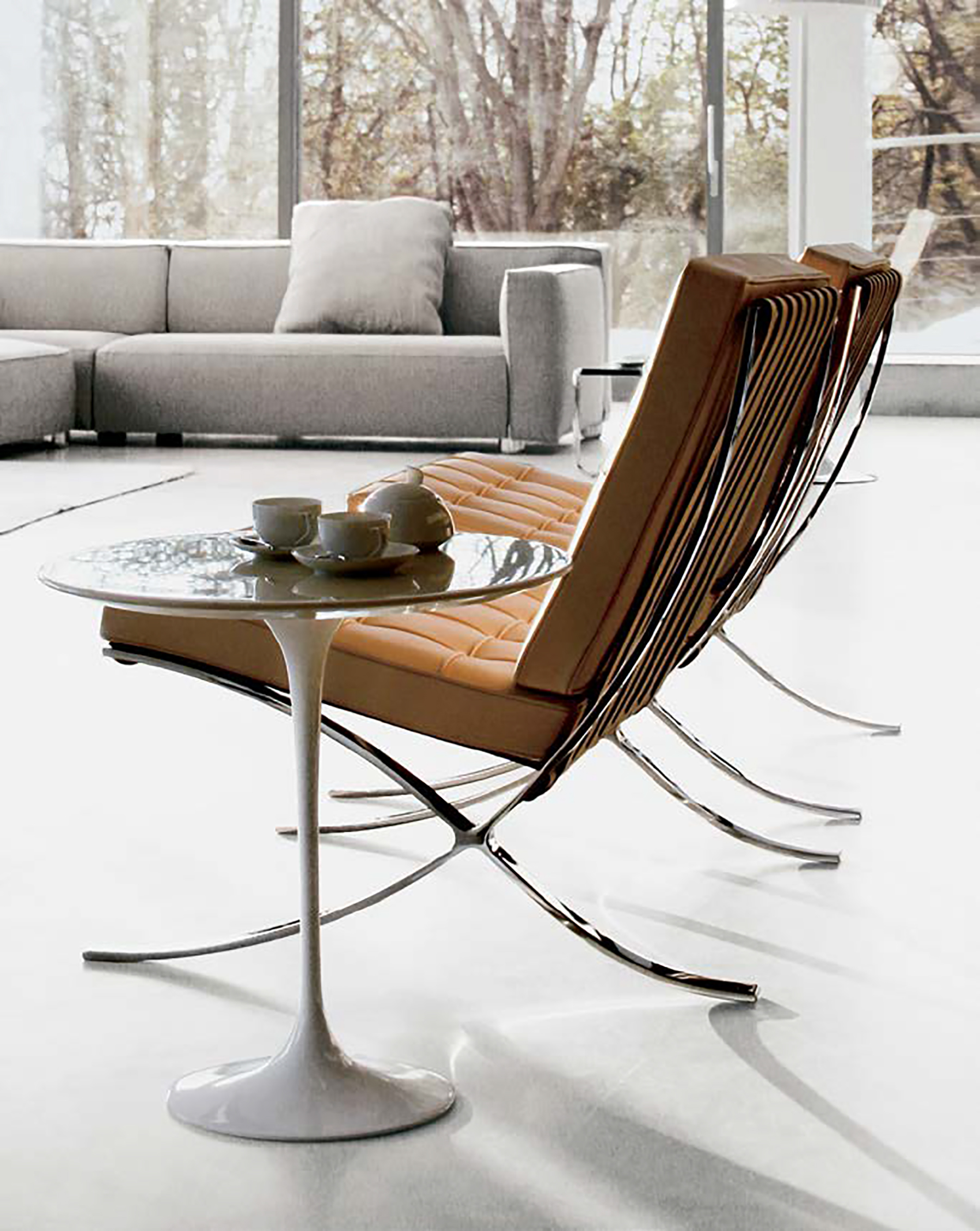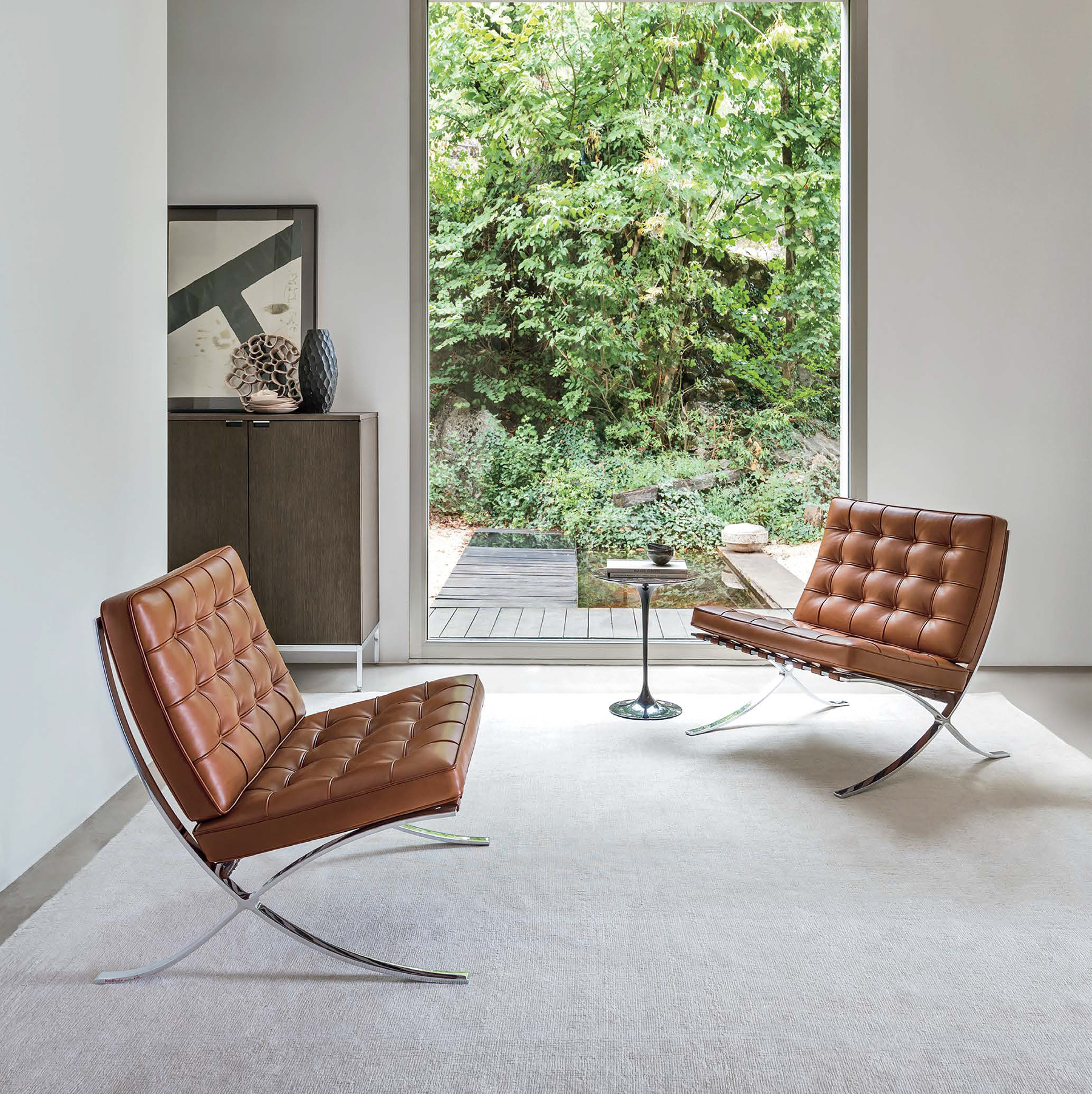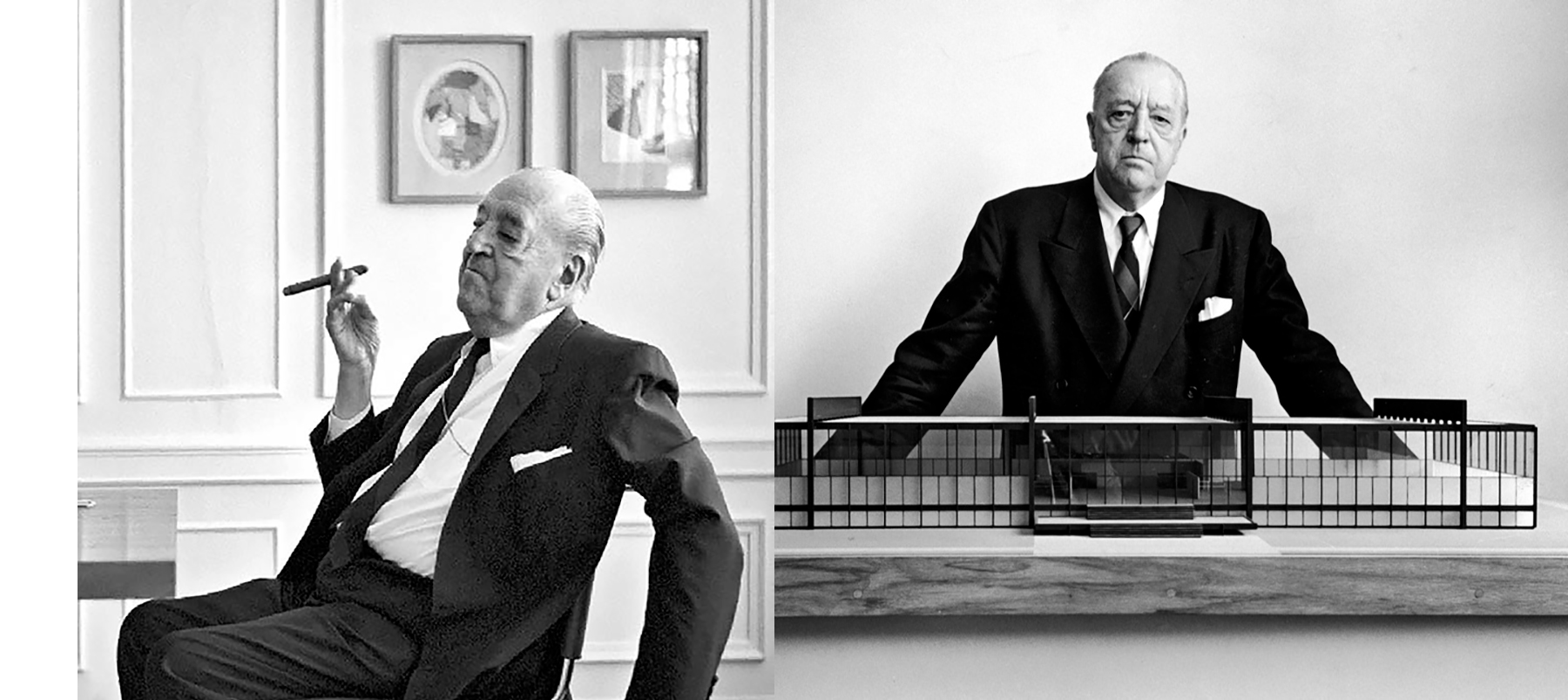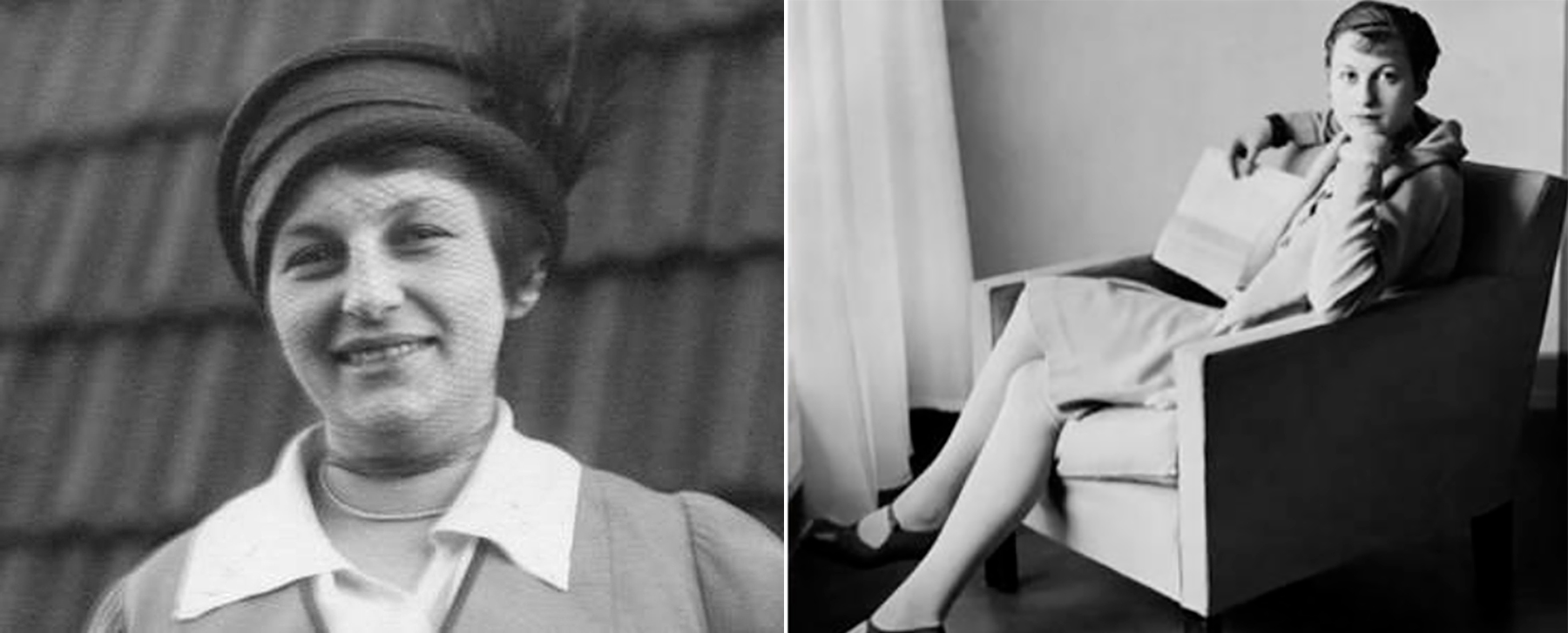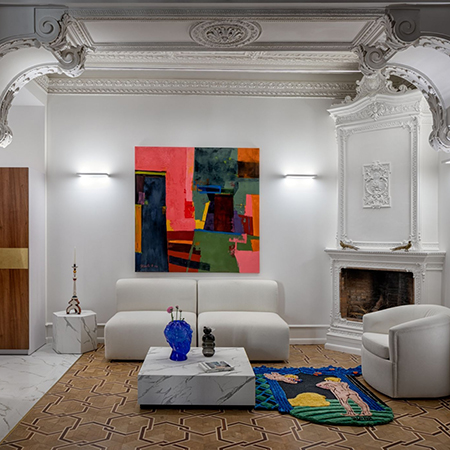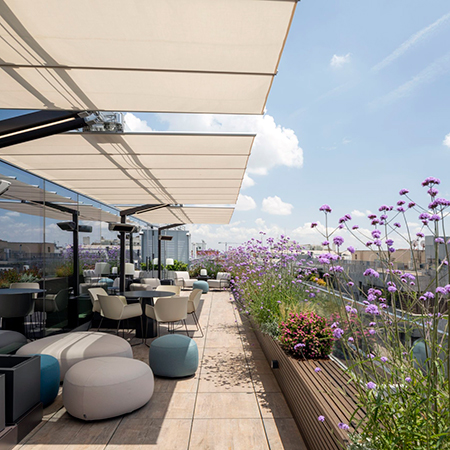The Barcelona armchair: a design icon of the XNUMXth century
About to turn 100 years old, the armchair Barcelona It was an architect's design Ludwig Mies van der Rohe in 1929 for the Barcelona International Exhibition and it has become one of the icons of the XNUMXth century as far as design is concerned.
However, the latest research indicates that the chair was designed in collaboration with lilly reich, partner and companion of Mies van der Rohe for 12 years. In fact, today it is considered that Reich was the true architect of the design and that Mies contributed to shaping the structure. Both worked on the design of the Pavilion, whose joint authorship is irrefutably proven.
Historic context
La Barcelona chair was developed in a specific context between the wars, in the midst of German reconstruction during the Weimar Republic and with the Bauhaus school as an inspiring and dynamic center of German design. The chair was created specifically for the International Exhibition Pavilion, which was intended to showcase the power and modernity of the newly established German state. Hence this model, originally called MR90, will be renamed with the name of Barcelona chair or armchair.
The designers, architects and artists of the Bauhaus, of which Mies was its last director, between 1930 and 1933, knew how to take advantage of the new technologies. and the new materials developed during the war. In this sense, the design of the chair represents an avant-garde proposal for domestic use, with the clear desire to be mass produced, which was one of the ideals of Bauhaus design.
With it, the aim was to minimize the typical four-legged wooden structure, an aspect that became an obsession for the carpentry and interior design workshop of the Bauhaus in Weimar. Another of the most famous design chairs of the XNUMXth century would come out of this workshop: the Wassily armchair by Marcel Breuer.
The structure and subsequent redesign
The chair is inspired by the curuli saddle of the Roman magistrates, and reinvented itself as a sort of modern throne so that the kings Alfonso XIII and María Cristina could sit during the opening of the Exhibition.
Originally, the chair was made of chrome steel, the joint of the legs was screwed and the surface of the seat and the backrest were pigskin. Later, in 1950, adjustments were made to the design for its large-scale production: it began to be manufactured in one-piece stainless steel without screws and the pigskin was replaced by bovine. With harmonious proportions, its design gives a sensation of lightness and spatiality. has a sequence of 24 leather straps screwed or riveted that support the seat and back cushion. The cushions are filled with Polyurethane foam and fully upholstered in cowhide (in various colors) fastened by hidden double buttons at the quilted style.
The chair Barcelona, which remains very popular, is now manufactured by Knoll, under license purchased from Mies van der Rohe in 1953. By then, Lilly Reich had already passed away, so she could not claim her copyright and the chair was always known as work of Mies van der Rohe. Neither did the famous architect acknowledge Reich's co-authorship during his lifetime.
Currently, the Barcelona chair is manufactured following the original manufacture: they are cut 40 individual panels, they are sewn by hand and inserted, also by hand, with leather buttons made from cowhide. The cushions They are made of high-quality, highly elastic polyurethane foam with down-shaped Dacron polyester fiber filling. The upholstery webbing They are made of leather (this detail is a distinctive sign that differentiates them from multiple copies). Sides are stained to match upholstery color. Are used 17 straps for cushion support. The frame is chrome plated and hand polished to a mirror finish.
The German Pavilion of the International Exhibition in Barcelona in 1929
As we have pointed out above, the prestige and recognition of Ludwig Mies van der Rohe as a prominent figure of the modernist movement were decisive in entrusting him with the project of designing the German Pavilion for the 1929 Barcelona International Exposition, together with Lilly Reich.
Through masterful proportion and planning, they created a rhythmic space and completely unprecedented, which raised the materials of the industrial era at a level of grace never before achieved. For the interior, chairs and stools were designed as a resting place for the Kings of Spain. It is believed that the interior, disposition of the pieces and design of the same ones was in charge of lilly reich, because the style of his works carried out until then is recognized. In fact, after leaving his collaboration, Mies van der Rohe never did any other interior design work.
Although the Barcelona Pavilion was only standing for seven months, is recognized as a defining achievement of modern architecture, as are the chairs Barcelona that accompany it (although there are no images of the Kings sitting on them).
Mies van der Rohe Foundation Barcelona
After the closing of the Exhibition, the Pavilion was dismantled in 1930. Over time it became a key reference point in the architecture of the XNUMXth century as a whole. The significance and recognition of the Pavilion led us to think about its possible reconstruction.
In 1980, Oriol Bohigas promoted this initiative from the Urban Planning Delegation of the Barcelona City Council, and Ignasi de Solà-Morales, Cristian Cirici and Fernando Ramos they were the architects appointed to research, design and direct the reconstruction of the Pavilion. Work started in 1983 and the new building was inaugurated in 1986 in its original location.
Glass, steel and four different types of stone (Roman travertine, green marble from the Alps, ancient green marble from Greece and golden onyx from the Atlas) were the materials used in the reconstruction. All of them have the same characteristics and origin as those initially used in 1929.
the originality of Mies van der Rohe and Lilly Reich in the use of materials does not lie in their novelty, but in the ideal of modernity that they expressed through the rigor of their geometry, the precision of their pieces and the clarity of their assembly.
For three years now, the Foundation, which openly recognizes the co-authored by Lilly Reich in the Pavilion project, has created a scholarship, which aims to support the study, dissemination and visibility of contributions to architecture that have been discriminated against, relegated and forgotten.
Mies van der Rohe
Considered one of the most important figures in the history of architecture, the approach of Ludwig Mies van der Rohe de "less is more" in design it was the gold standard for many generations of modern architecture. His legendary career began humbly in his father's masonry business, which gave him an early appreciation of the materials and structures. From there he became an apprentice to the furniture designer bruno paul in Berlin, before entering the office of Peter Behrens, an architect and painter at the forefront of the modern movement.
In 1912 Mies established his own office in Berlin. Thanks to his furniture, residential projects and extraordinary skyscraper concepts, not yet realized, he earned recognition as leader of the German modern movement. As such, he was selected to design the German Pavilion at the 1929 Barcelona International Exposition, together with his companion and partner Lilly Reich.
Mies was vice president of the Deutscher Werkbund and director of the Bauhaus from 1930 until its closure in 1933. He emigrated to United States in 1938 to become director of architecture at the Armor Institute (later Illinois Institute of Technology). From his Chicago studio, Mies designed a portfolio of buildings that changed the face of American institutional architecture, the most notable examples being the IIT campus and seagram building from New York. His mark has been deep and a cornerstone in North American architecture, where he was an icon of the avant-garde and modernity. He died in Chicago in 1969.
lilly reich
Lilly Reich entered the field of architecture after studying design and textile industries. However, she was not an architect, a fact that was probably one of the reasons why her figure was relegated to oblivion. In 1908 he moved to Vienna, where he worked at the Wiener Werkstatte, an association of artists, architects and designers who bet on the integration of all the arts in a common project, without distinction between major and minor arts. He also worked briefly with the architect Josef Hoffmann, one of its ideologues. He returned to settle in Berlin in 1911, already working independently. There he became part of the Deutscher Werkbund, an association founded in 1907 made up of industrialists, architects and artists and which marked German industrial design. Lilly Reich stood out for her ideas and organizational capacity, acquiring more and more responsibilities until she was appointed its director in 1920.
Between 1925 and 1938 Lilly Reich and Mies van der Rohe collaborated closely on different projects, and in 1928 she was appointed "artistic director" of the German section of the barcelona exhibition, thus sharing the same position that Mies van der Rohe held. When Mies fled to the United States in 1938, she was left in charge of the studio and safeguarded more than 2000 drawings and sketches by Mies, which are now kept in the MoMA, together with 900 of his designs. In 1939 he traveled to Chicago to meet with Mies, but the meeting did not take place and he returned to Berlin. His situation in National Socialist Germany was not easy, he spent three years in a forced labor camp during the war. After the conflict, she fought to try to return Berlin to a certain normality, and she was responsible for the restoration of the Deutscher Werkbund, which was finally reinstated in 1950, after his death from cancer in 1947.
Sources: Mies van der Rohe Foundation and Knoll
